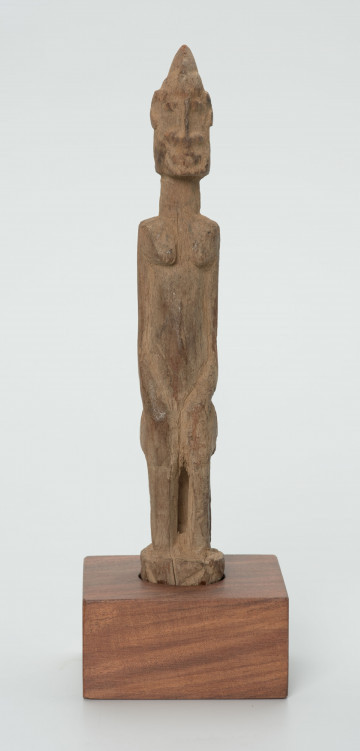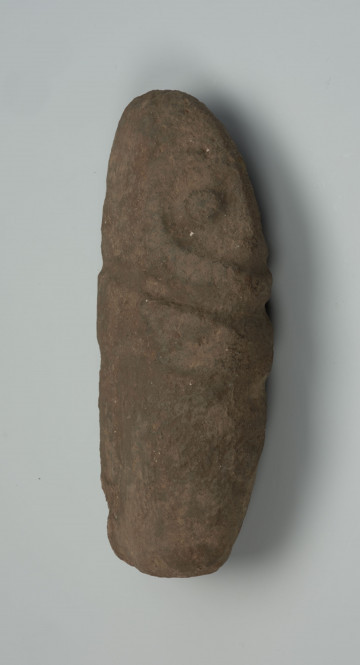
Figurine - ancestor
między 1901 — 1950
National Museum in Szczecin
Part of the collection: Collection of Dogonian art
Nommo are the most crucial deities in Dogon mythology. In the oral tradition of the people of the Bandiagara Escarpment, there are many stories about the Nommo's involvement in the creation of the first humans. According to one version, Nommo helped the god Amma to create the first humans and made sure that they were endowed with a double soul as a symbol of perfection. In another myth, the first ancestors were born from the remains of Nommo, sacrificed by Amma to purify the Universe scarred by the incestuous act of Yurugu (Ogo). From his head thrown to the east emerged Binu Seru, from the penis that landed to the west Amma Seru was born, from the breast pressed by the creator Amma to the south gave birth to Dyungo Seru, and from the belly thrown to the north emerged Lebe Seru.The Dogon owe all their skills to Nommo, the knowledge of how to cultivate the land, how to make objects necessary for normal functioning, speech, institutions. However, Nommo are not benevolent deities, for they have a dual nature and just as often destroy, harm and kill people, especially those who disobey the rules of traditional religion. The best examples of this duality are Yurugu and O Nommo.The figurine shows the figure of a man with twisted legs. According to the interpretation obtained from the owner, it is a representation of Nommo, a creature that has the characteristics of humans, snakes and fish, and therefore difficulty in moving. There are also explanations that it is an image of a mythical ancestor captured at his transformation into a snake, or an image of the whirling motion with which Amma brought the world into existence.
Ewa Prądzyńska
Author / creator
Dimensions
cały obiekt: height: 36 cm, width: 7,5 cm
Object type
figure
Creation time / dating
Creation / finding place
Identification number
Location / status

między 1901 — 1950
National Museum in Szczecin

między 1951 — 2000
National Museum in Szczecin

między 1951 — 2000
National Museum in Szczecin
DISCOVER this TOPIC
National Museum in Lublin
DISCOVER this PATH
Educational path